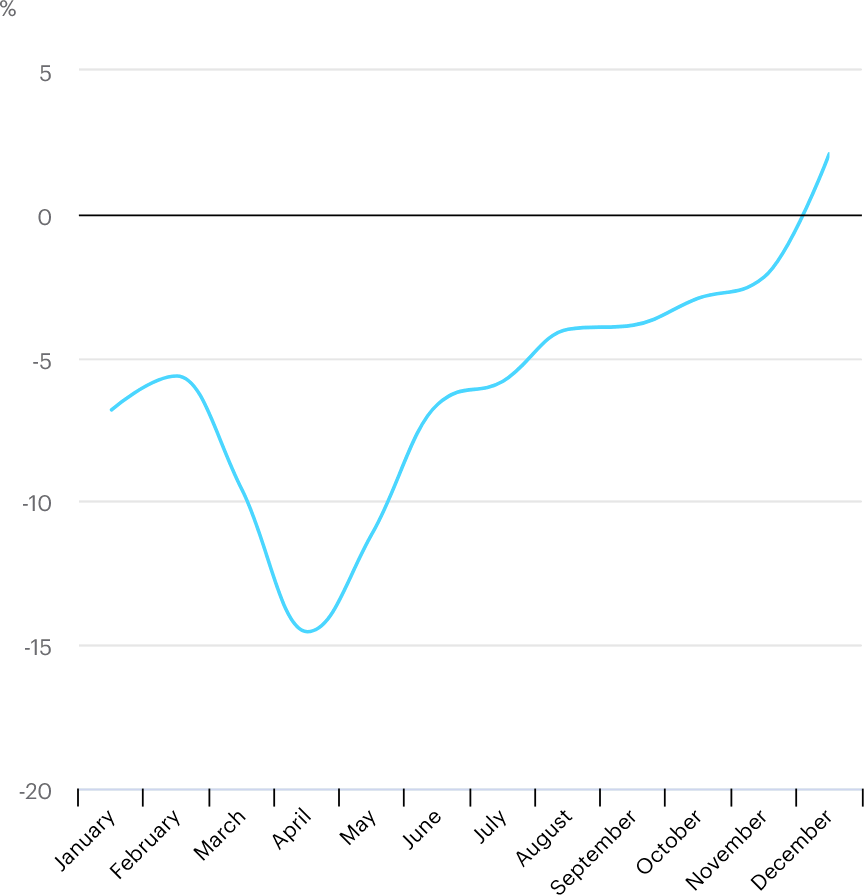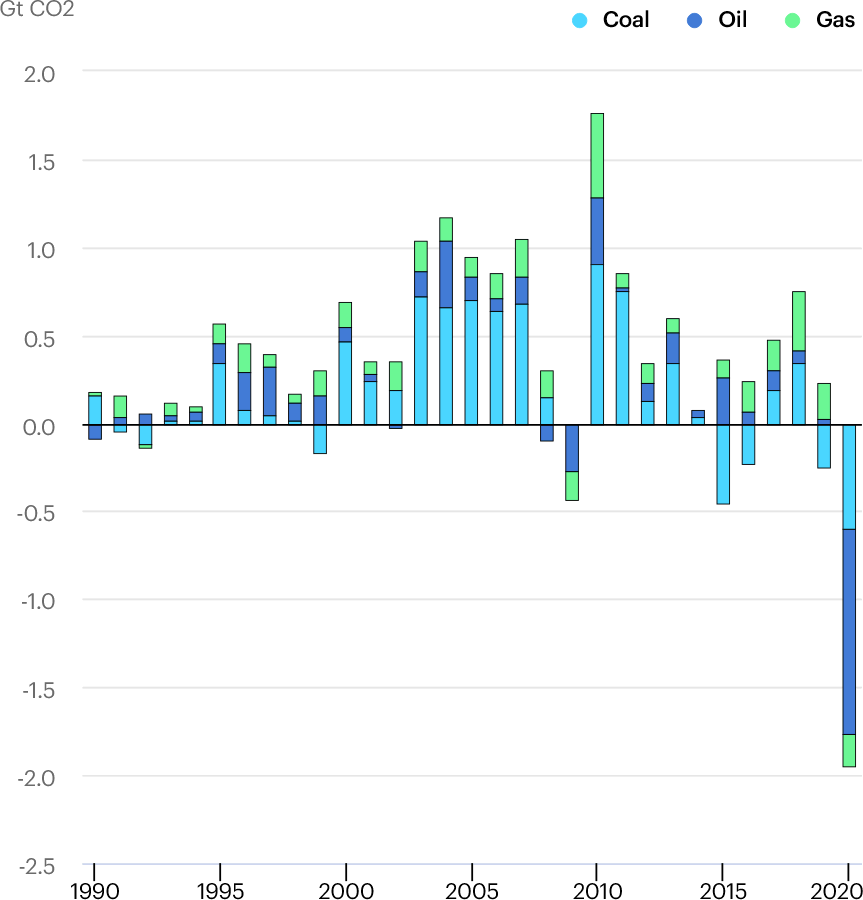IEA: Global CO2 emissions recover to above pre-pandemic level in December 2020
March 2, 2021
The International Energy Agency (IEA) has released its analysis of CO2 emissions in 2020, the year of the Covid-19 pandemic, which shows that many economies are now seeing emissions climbing above pre-crisis levels. Globally, energy-related CO2 emissions were 2% higher in December 2020 than in the same month a year earlier.
The Covid-19 crisis triggered the largest annual drop in global energy-related carbon dioxide emissions since the Second World War, according to IEA data, but the overall decline of about 6% masks wide variations depending on the region and the time of year. After hitting a low in April, global emissions rebounded strongly and rose 2%, or 60 million tonnes, above 2019 levels in December 2020.

(Source: IEA)
“The rebound in global carbon emissions toward the end of last year is a stark warning that not enough is being done to accelerate clean energy transitions worldwide,” said Dr Fatih Birol, the IEA Executive Director.
The recovery of economic activity was not evenly distributed between regions. For example:
- Emissions in China for the whole of 2020 increased by 0.8%, or 75 million tonnes, from 2019 levels driven by China’s economic recovery over the course of the year. China was the first major economy to emerge from the pandemic and lift restrictions, and the only major economy that grew in 2020.
- In India, emissions rose above 2019 levels from September as economic activity improved and restrictions were relaxed. In Brazil, the rebound of road transport activity after the April low drove a recovery in oil demand, while increases in gas demand in the later months of 2020 pushed emissions above 2019 levels throughout the final quarter.
- Emissions in the United States fell by 10% in 2020. But on a monthly basis, after hitting their lowest levels in the spring, they started to bounce back. In December, US emissions were approaching the level seen in the same month in 2019. This was the result of accelerating economic activity as well as the combination of higher natural gas prices and colder weather favouring an increase in coal use.
As primary energy demand dropped nearly 4% in 2020, global energy-related CO2 emissions fell by 5.8% according to the IEA data. In absolute terms, the decline in emissions of almost 2,000 million tonnes of CO2 is without precedent in human history—broadly speaking, this is the equivalent of removing all of the European Union’s emissions from the global total, said the IEA.
Demand for fossil fuels was hardest hit in 2020—especially oil, which plunged 8.6%, and coal, which dropped by 4%. Oil’s annual decline was its largest ever, accounting for more than half of the drop in global emissions, Figure 2.

(Source: IEA)
Global emissions from oil use plummeted by well over 1,100 Mt CO2, down from around 11,400 Mt in 2019. The drop in road transport activity accounted for 50% of the decline in global oil demand, and the slump in the aviation sector for around 35%. Meanwhile, low-carbon fuels and technologies—hydro, renewables, and nuclear—reached their highest ever annual share of the global energy mix, increasing it by more than one percentage point to over 20%, driven primarily by increases in solar PV and wind energy.
In road transport, the demand for oil dropped 10% relative to 2019. The impact of the pandemic on global car sales was even greater: these fell by close to 15%. Electric cars bucked this trend, with their sales growing by more than 40% in 2020 to over 3 million, largely driven by policy support in the European Union and stimulus measures in China. However, the decrease in emissions from higher electric car sales last year was offset by emissions growth from the continued shift towards larger vehicles such as SUVs.
Source: IEA